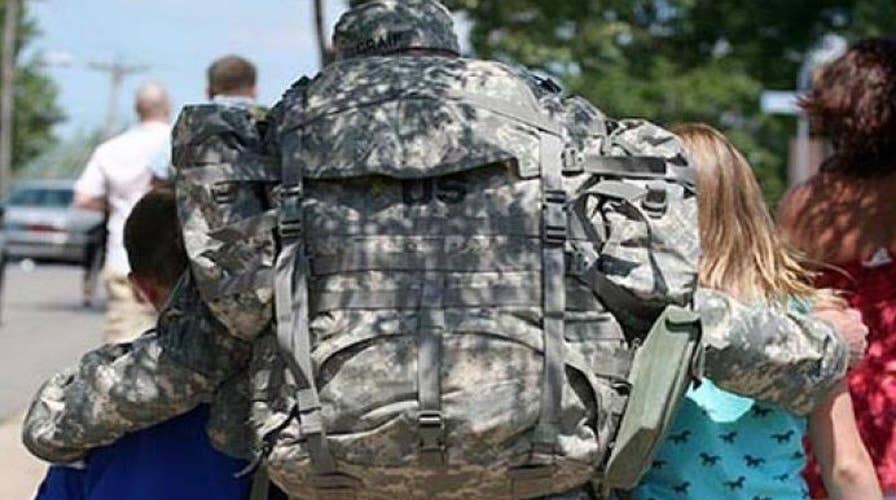Jan Brewer: Military children need 'consistent education'
Former Arizona governor calls for common standard to help families constantly on the move
If there is one group that best represents the need for high, consistent educational standards in our public schools today, it is the military family.
For more than 50 years, America has relied on a small, but significant, core of volunteer soldiers, sailors, and airmen. Many of these brave men and women dedicate 20 years or more of their lives in the service to their country on the front lines. Most have their own families who also serve our country on the home front.
Military families, like others, want their children to have the best education possible. But consider this fact: Military families move an average of six to nine times throughout a child’s K-12 life. That’s a new school every year and a half to two years.
That means new teachers, friends, expectations and curricula. In some states, military-connected students may be ahead of their classmates. In others, they may be far behind.
Having grown up on a military base, I know this places significant stress on military children.
This explains why groups like Military Families for High Standards exist. Led by Christi Ham, a longtime military spouse, parent and educator, the initiative is working to raise awareness about why military students need these high standards and how consistent standards can benefit these highly mobile students as they move from state to state and base to base.
If moving was not bad enough, military families know the quality of the public schools surrounding our bases is extremely uneven. This makes the strain even worse. After all, no one wants to send their kids to a bad school.
It’s no wonder why this issue is so important to military families. So much so, that – not surprisingly – education plays a role in reenlistment. Surveys show service members are less likely to reenlist if they face a transfer to a base with poor-performing schools.
Fortunately, the military has heard these concerns. Now, the branches are starting to do something about them.
First, the Pentagon and states put together the Military Interstate Children’s Compact in 2007. The Compact set rules for the treatment of military children transferring between school districts and states.
For example, say a child receives a passing grade in algebra in Arizona. If the family moves to Georgia, the Compact ensures the student doesn't have to retake the class. The Compact finally went into effect in all 50 states in January 2015.
Now, the Pentagon is looking at ways to pressure base communities to improve schools. In 2013, now-former Army Chief of Staff Raymond Odierno signaled a major change. The Pentagon, he said, would be looking at the quality of schools around military bases as a factor in future base closings.
At a press event with military families, Odierno was asked what local politicians could do to keep military bases open. He responded, “[T]hey better start paying attention to the schools that are outside and inside our installations. Because as we evaluate and we make decisions on future force structure, that will be one of the criteria.”
Odierno went one step further. He commissioned a study that examined schools that serve at least 200 children of Army soldiers in the United States. It reviewed and reported on 393 individual public schools across 22 states. For example, in Arizona, the report looked at nine public schools near Ft. Huachuca.
The study had one major conclusion. It found that since every state uses different standards, it was impossible to compare the schools across borders. In short, you couldn't compare Arizona's nine schools with those in Texas or any other state.
That’s where high, consistent standards, such as the Common Core State Standards, come in. Developed by governors and state education departments, the Common Core is currently used in 43 states and the District of Columbia. The Department of Defense Education Activity, the branch of the Pentagon that runs military schools, also uses it.
The Common Core lays out a path that ensures students gain the knowledge and educational skills necessary to succeed in college, career and life. It also allows for apples-to-apples comparisons of school performance across state borders.
Military families sacrifice a lot for us. In return, we need to do everything possible to ensure their kids have an opportunity to succeed. The continued use of high, consistent national standards ensures their kids, and ours, get the best education possible.

